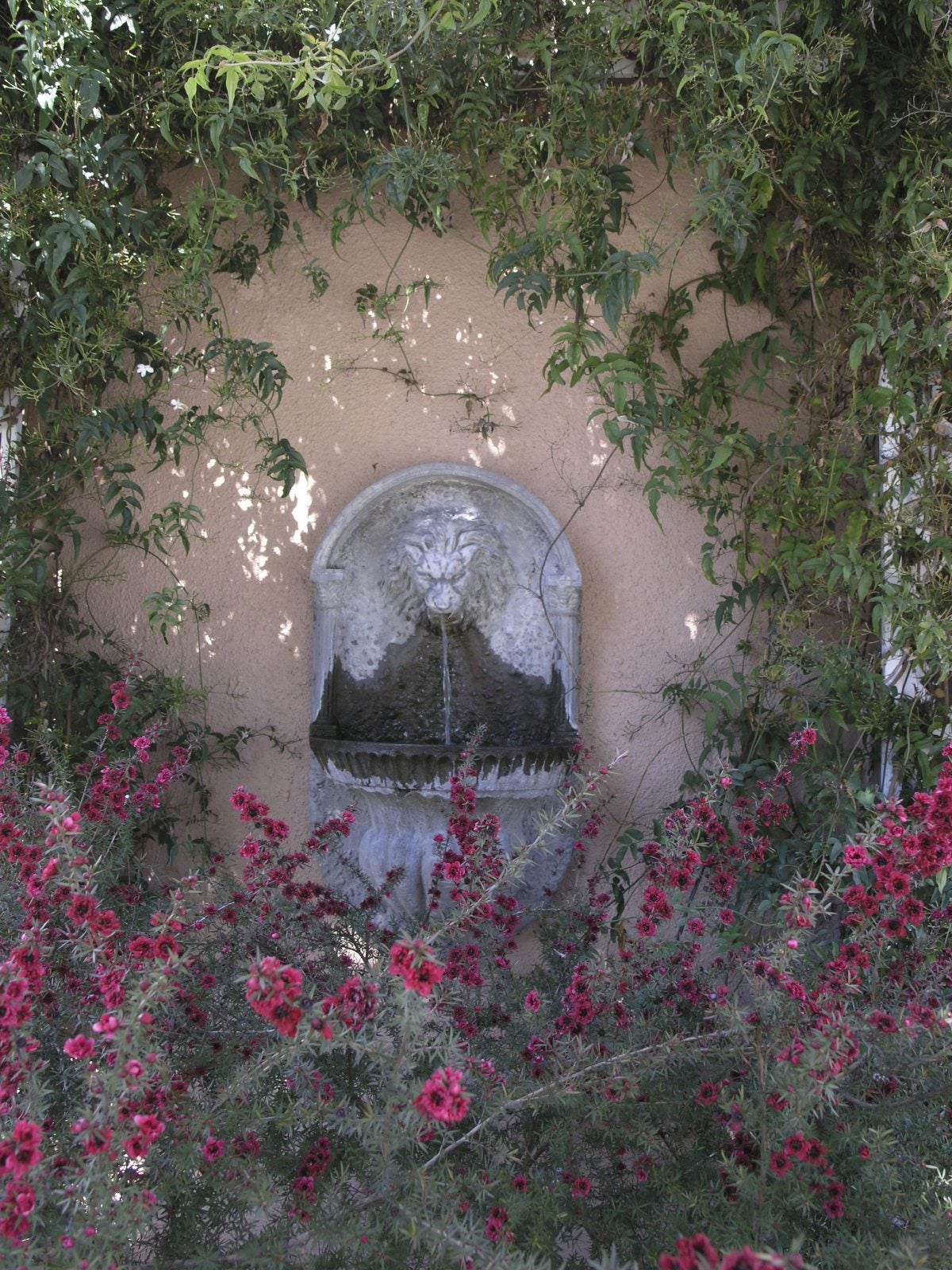DIY Wall Fountains: How To Build A Wall Fountain For Your Garden


The pleasing burble or rush of water as it tumbles off a wall has a calming effect. This type of water feature takes some planning but is an interesting and rewarding project. A garden wall fountain enhances the outdoors and has sensory benefits. Outdoor wall fountains have been common features of planned gardens for centuries. They invite the subject to relax and simply take in the sounds and sights of the landscape, brushing off daily cares and troubles. DIY wall fountains can be as simple or complex as you desire but any variety has some simple characteristics that are the core of the project.
What is a Wall Fountain?
If you have ever been to a formal garden, you may have seen a garden wall fountain. What is a wall fountain? These may be built into the wall or just a fixture applied to the wall. Water is circulated through a pump and tubing from a basin or pond below, back up into the top of the vertical surface and down and around over and over. This cycle has a repetitive effect that is reminiscent of the cycle of life, and the gentle sight and sound are meditative. You can try making one yourself with some basic tips. Water features have traditionally been incorporated in gardens probably as long as planned cultivation has been around. Early waterfall and wall fountains were driven by gravity, but over time they were powered by pumps. By the 18th century, pump type outdoor wall fountains were the norm. A wall fountain may be indoor or outdoor and can be made from any number of materials, including stone, granite, stainless steel, resin, and glass. Today’s wall water features are powered electrically or by solar power. The mechanisms are practically noiseless to allow the sound of water to penetrate without distraction. As long as you have a reservoir or sump, power of some kind, and a pump, you can build a wall fountain.
Easy DIY Wall Fountains
One of the quicker ways to get a fountain is to purchase a model that is already made. These may be ornamental where the flow of water is broken by a sculpture or where the liquid goes into a decorative reservoir such as a terra cotta pot. These are often mounted on an existing wall and come with tubing, pumps, electrical cords, and attaching fixtures. The installation couldn’t be simpler. All you do is mount the model and plug it in, adding water before you do so. You can then choose to disguise the tubing and mechanisms with rocks, moss, plants, or any other items that appeal to your senses.
How to Build a Wall Fountain
If you already have a wall, half your project is complete; however, it is easier to hide the mechanisms necessary for a fountain if you build the wall around these items. A river rock wall, for example, is attractive, hard to mess up, and provides a natural-looking scene over which water can cascade. Take the measurements of the area for the project and go to a landscape supply outlet. They can tell you how much rock to acquire for the area you wish to cover. Once you have rock, you will need mortar and pond liner or a pre-formed reservoir. You may choose to excavate a pond at the base of the fountain or use a plastic form for the reservoir. The mortar will hold the rock in place and the design is completely up to you. Build from the ground up, placing your reservoir where you want it in the first few tiers of rock. Place the pump in the base of the reservoir and run the tubing to it and up the wall. Cover the tubing unobtrusively with rocks or plants. It should end up sticking out of the rock wall when you are finished. After the mortar cures, fill the reservoir with water, plug in the pump, and watch your wall fountain spill out of the rock formation.
Sign up for the Gardening Know How newsletter today and receive a free copy of our e-book "How to Grow Delicious Tomatoes".

Bonnie Grant is a professional landscaper with a Certification in Urban Gardening. She has been gardening and writing for 15 years. A former professional chef, she has a passion for edible landscaping.